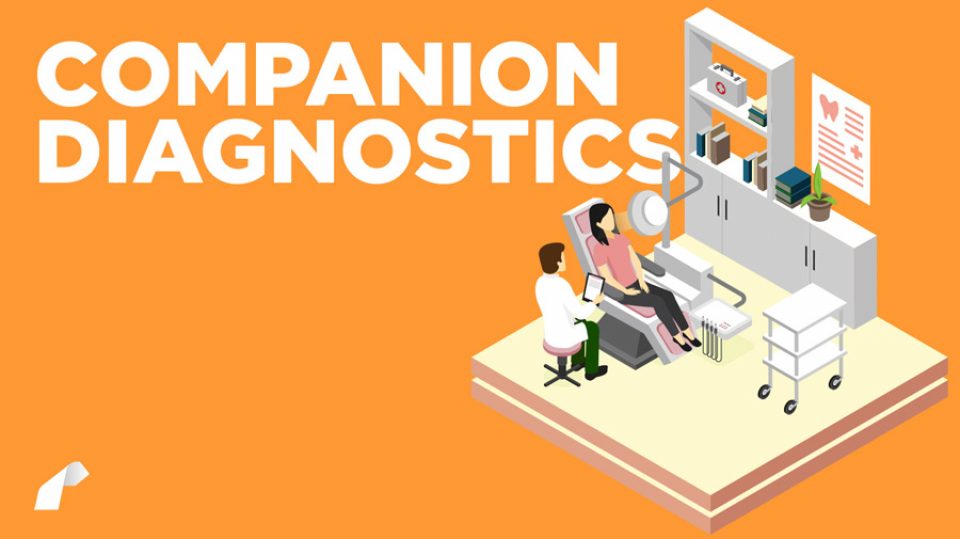Prospects for Companion Diagnostics

Are you developing a medicine for which a clinical safety or efficacy biomarker may be relevant? Do you want to develop a test for identifying those patients that could most benefit from your medicine?
Personalised medicine allows customisation of healthcare towards the individual patient and can involve medical decisions, practices, and products being tailored to the individual patient.
Medicinal products are now designed to target specific receptors in the body. However, many therapies are recognised as having higher efficacy in specific patient populations. Identification of a specific biomarker to act as an indicator for patients who are more likely to respond to a medicine is increasingly used to minimise uncertainty. Therefore, some recently approved drugs and those currently in development are being designed to target a specific patient population.
Aligned with this new field of targeted medicines, the development and use of companion diagnostic tests is also increasing and is now being requested, where relevant, by competent regulatory authorities.
Companion diagnostics are validated tests or assays carried out to determine whether a patient will benefit from a specific treatment. The assays are able to detect a specific biomarker in a patient sample, which in turn indicates whether a drug or class of drugs will be efficacious and/or safe for use in that patient.
Development
Companion diagnostics may be developed together with a new treatment or, retrospectively, after a drug has come to market. Each is assessed on a case by case basis and some may even be considered as a single combination product with the therapy. Companion diagnostics help to improve clinical outcomes by identifying those patients who can benefit most and, thus avoiding adverse effects in patients unlikely to benefit. When developed alongside a drug, a companion diagnostic may improve efficacy signals and reduce safety signals, increasing the potential for approval and, ultimately, allowing the correct patients access to these novel therapies.
Many examples of companion diagnostics are found in the oncology arena, such as HercepTest. Developed by Dako, it is a laboratory test which measures the levels of Her2 protein being made by cancer cells. If the test determines that this protein is being overexpressed then a cancer patient may benefit from treatment with Herceptin (trastuzumab), developed by Genetech/Roche, which was designed to interfere with this protein.
Industry Guidance
Both the European Medicines Agency (EMA) and the US Food and Drug Administration (FDA) have recognised that use of companion diagnostics can lead to improved patient outcomes and are currently preparing guidance on this emerging area. In addition the FDA and other regulatory agencies are increasingly requesting co-development of drugs and companion diagnostics. The EMA released a reflection paper for consultation in June 2010 on the co-development of pharmacogenomic biomarkers and assays in the context of drug development. This paper focuses on genomic biomarkers in the context of assessing drug-response, condition/disease and for optimizing clinical trial design. These genomic biomarkers must be validated and fully assessed to ensure that their performance is sufficiently reliable to provide accurate results. The FDA released a draft guidance document in July 2011 on In-Vitro Companion Diagnostics. This guidance aims to clarify that if an In-Vitro companion diagnostic is essential for the safe and effective use of the drug then they should be approved contemporaneously by the FDA and use of the diagnostic should be indicated in the drug product labelling. The FDA guidance also provides information on possible premarket regulatory pathways for approval.
Issues
There are still issues in the area of companion diagnostics which need to be overcome by developers. One of the main issues is the logistics of coordinating development of the companion diagnostic and the drug. This development programme may be undertaken by a pharmaceutical company and a diagnostics company in partnership and approval for each product is reviewed by a regulatory agency or notified body. This can be challenging in terms of timing and coordination of activities for the two products.
Future
The numerous benefits companion diagnostics can offer are obvious. Thus, it is envisaged that their use will substantially increase in future medicinal product development and it is clear that regulatory agencies worldwide are already embracing this approach. When embarking on any future product development project, companies are advised to at least consider the applicability of a companion diagnostic to the development of the product.
Biomarker companion diagnostics on their own do have limitations. Thus, the future of personalised medicine is expected to be a multifarious approach integrating various technologies including multiple biomarkers and other data inputs such as imaging, test results and clinical outcomes.
Support & Expertise
Real Regulatory, with considerable in-house expertise in both pharmaceutical and in-vitro diagnostics, is uniquely placed to provide regulatory support to you during the co-development of your medicinal product and companion diagnostic.
Real Regulatory can support the clinical development program by liaising with the EMA and other national agencies to ensure appropriate qualification of both your biomarker and companion diagnostic. We can help you to track status, support the clinical trial submissions operationally, advise on regulatory strategy and participate in multifunctional project teams for both the medicinal product and the companion diagnostic. We can then assist you in gaining regulatory approval to market your medicinal product and companion diagnostic test.

